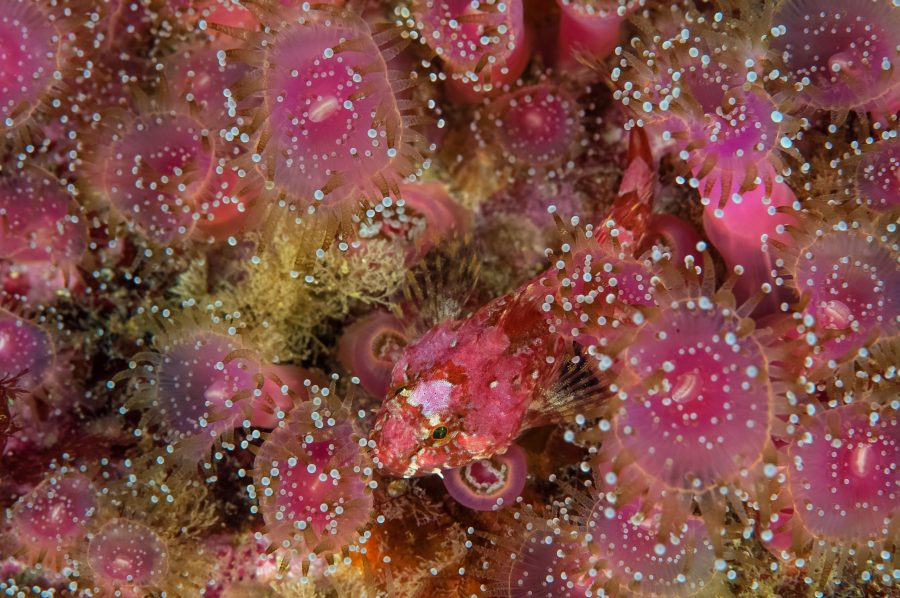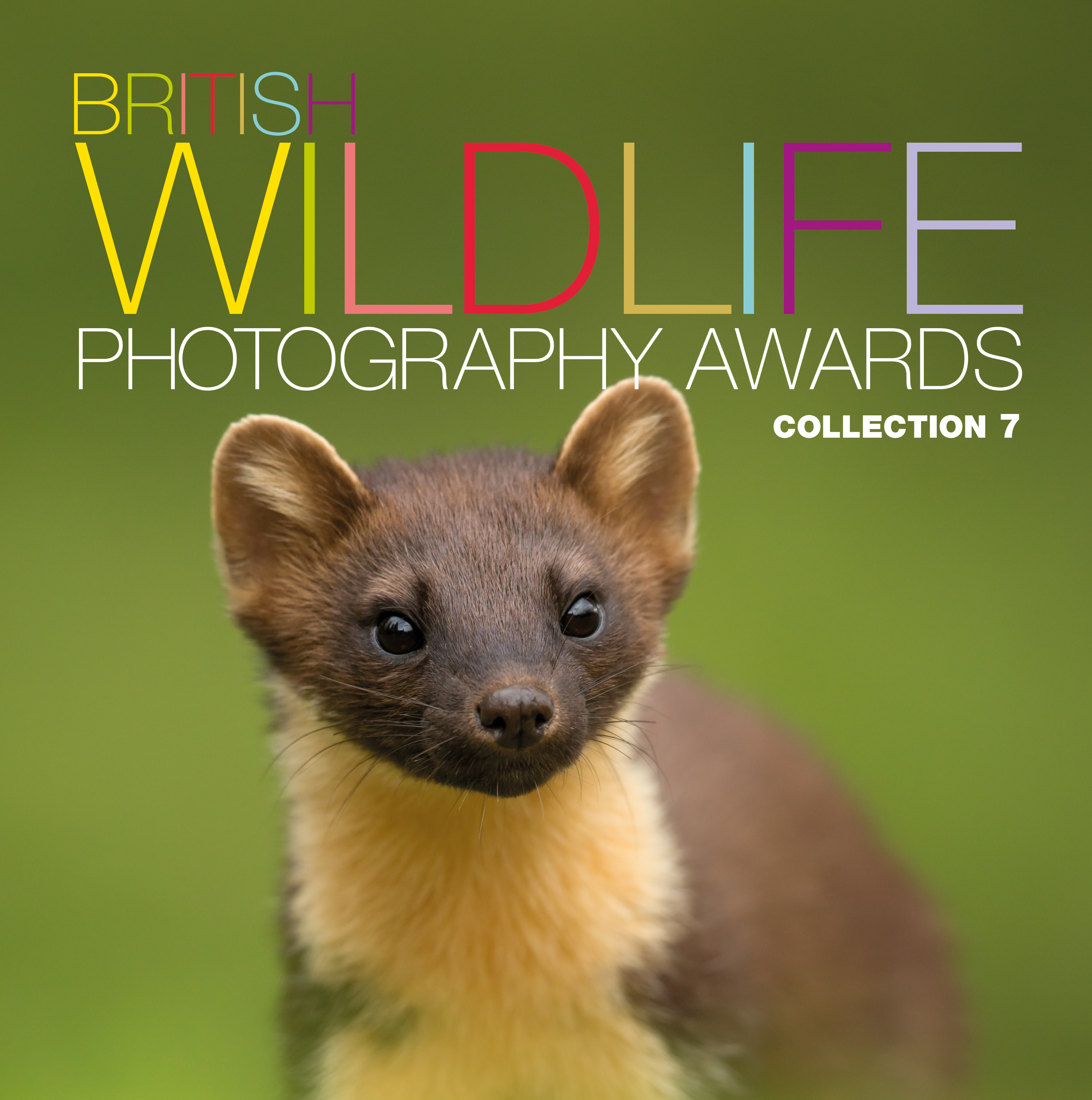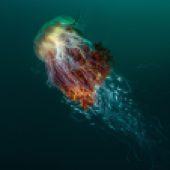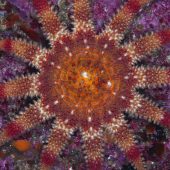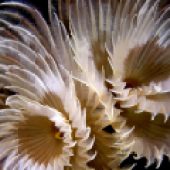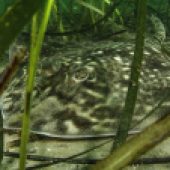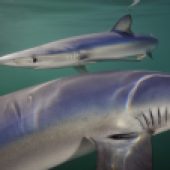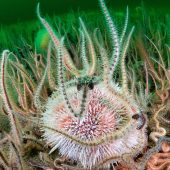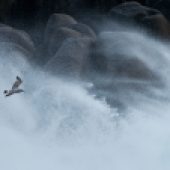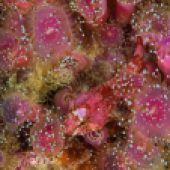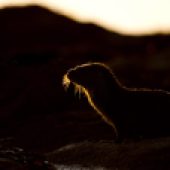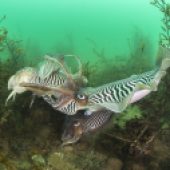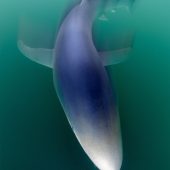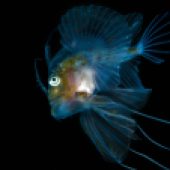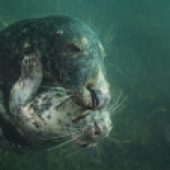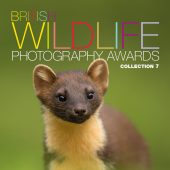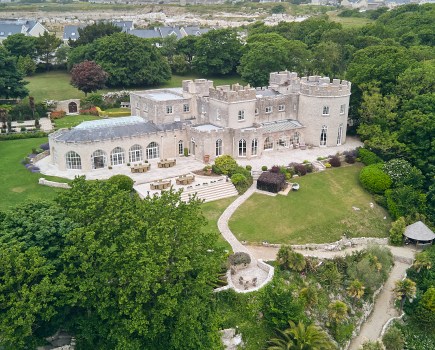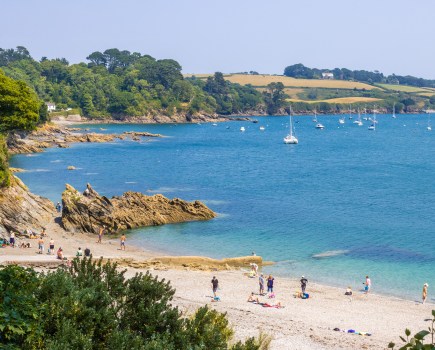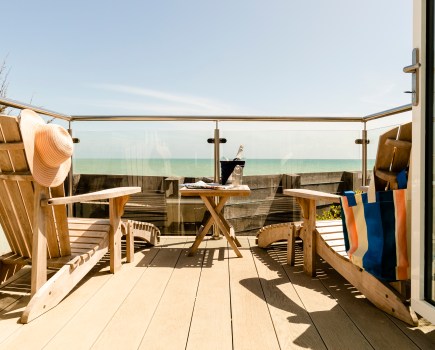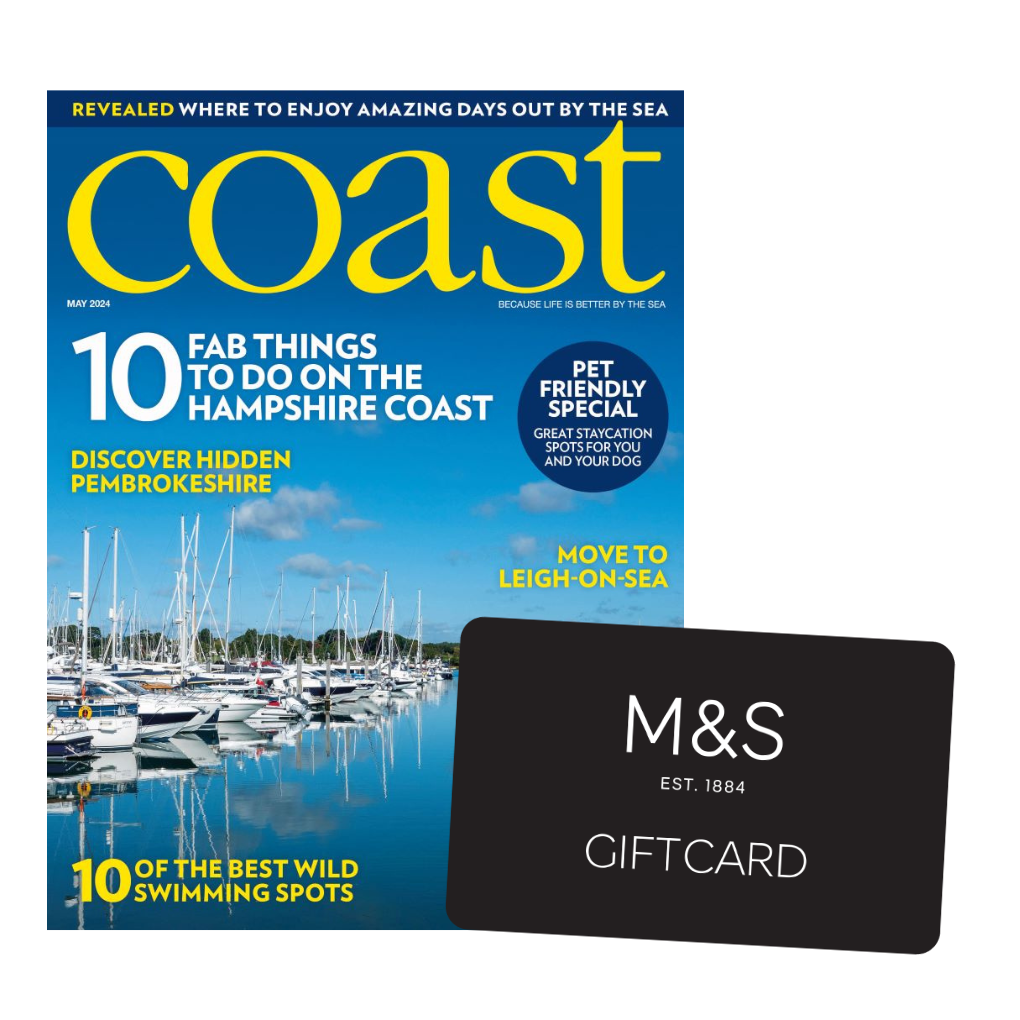COAST AND MARINE CATEGORY AND BWPA 2016 OVERALL WINNER:
‘Hitchhikers’ by George Stoyle taken at St Kilda, on the island of Hirta, Scotland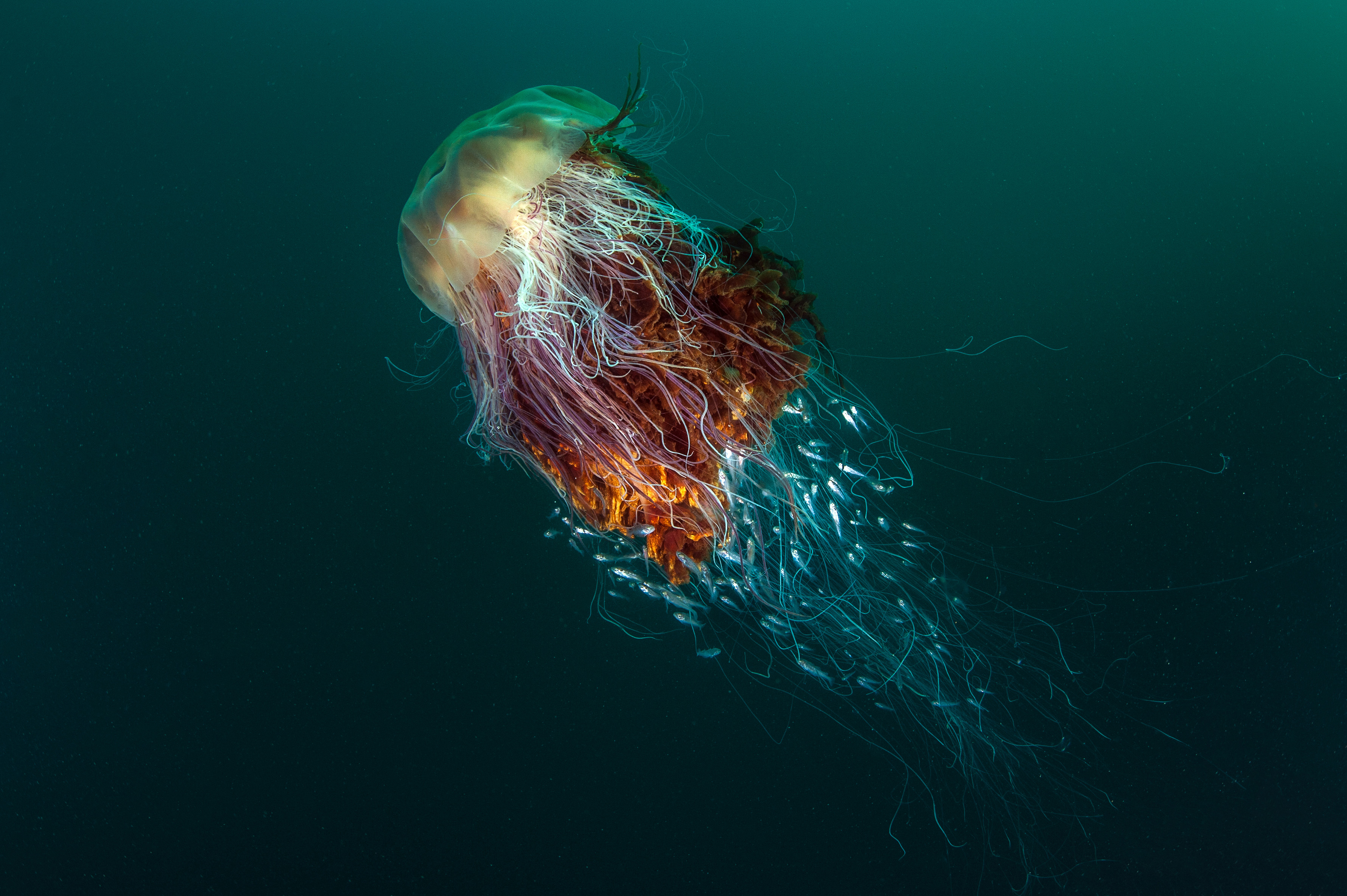
‘I was working for Scottish Natural Heritage on a project to assess the current biological status of major sea caves around some of the UK’s most remote islands. At the end of one of the dives I was swimming back to the boat when I came face to ‘face’ with the largest jellyfish I’ve ever encountered. As I approached cautiously I noticed a number of juvenile fish had taken refuge inside the stinging tentacles.’
‘Sunstar’ by Jane Morgan taken at Cape Wrath, Scotland
(Common sunstar, Crossaster papposus)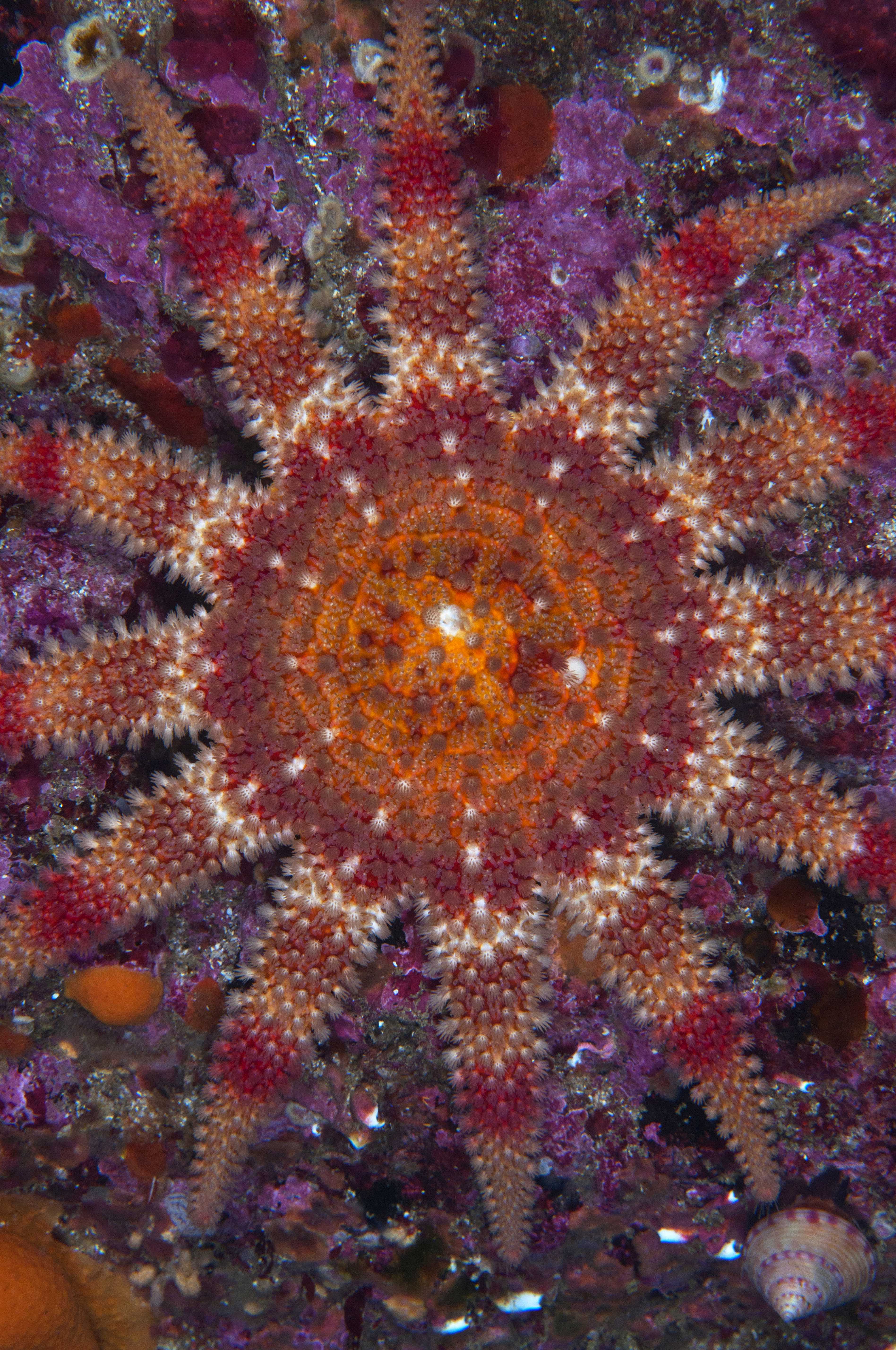
‘There is nothing common about the common sunstar, as they are generally one of the most colourful creatures on the reef. Often found in the Western Isles, the largest can grow up to a metre in diameter. They are slow moving, so relatively easy to frame in the shot if you can fit in all their arms, which can number between 8 and 16.’
‘Feather Spirals’ by Jane Morgan taken in Weymouth, Dorset, England
(Double spiral or Fan worm, Bispira volutacornis)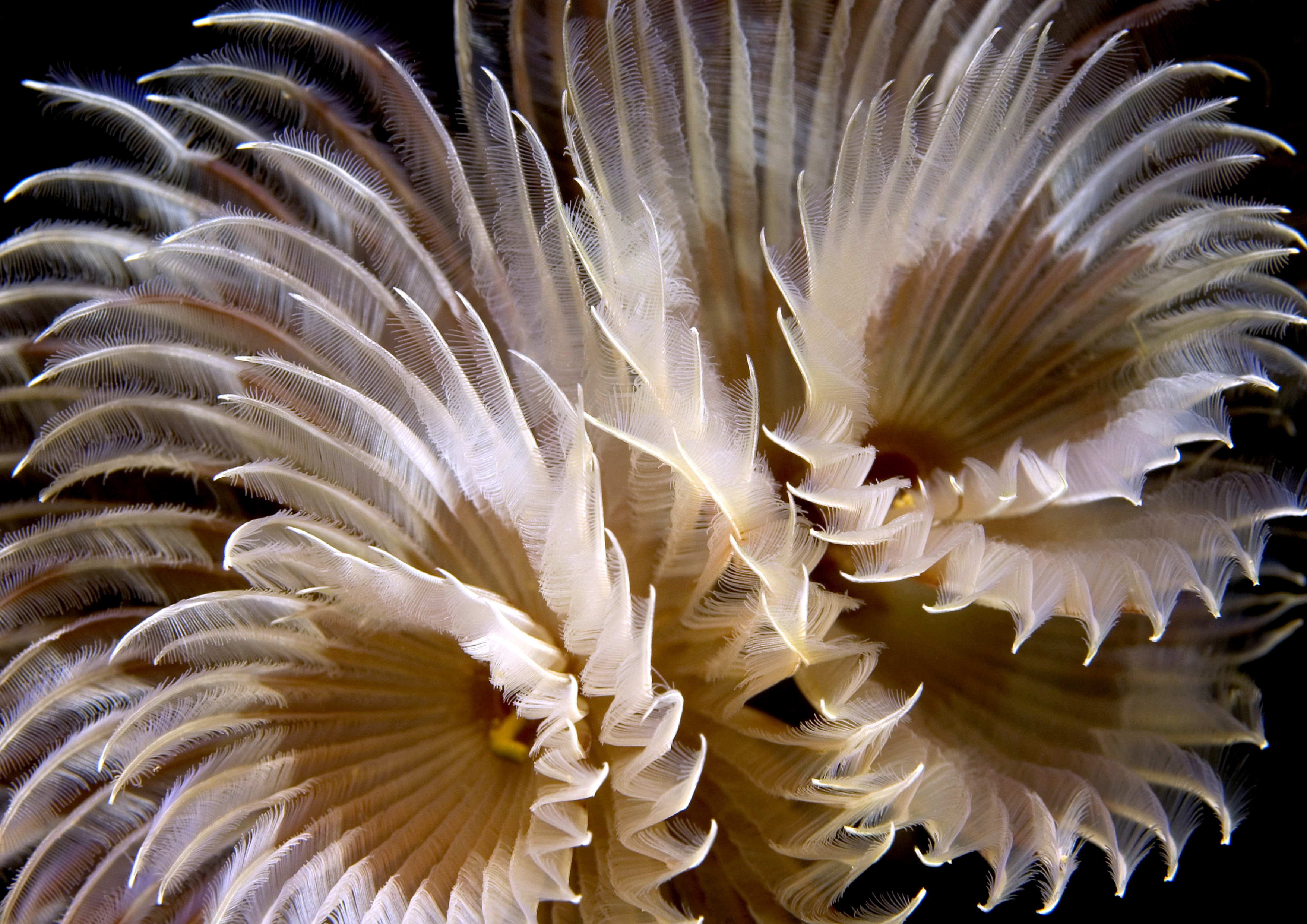
‘The double spiral fan worm is the most beautiful of the fan worm family. Aptly named, as the brown-and-white tentacles form a double spiral when extended. Any small movement can cause these tentacles to be withdrawn into the tube, so I had to approach really slowly to avoid spooking it. I was lucky to get as close as I did to this individual, enabling me to capture the beauty of the feathery spirals.’
‘Thornback Ray Resting in Eel Grass Bed’ by Mark Webster taken at Grebe Beach on the Helford River, Cornwall
(Thornback ray, Raja clavata)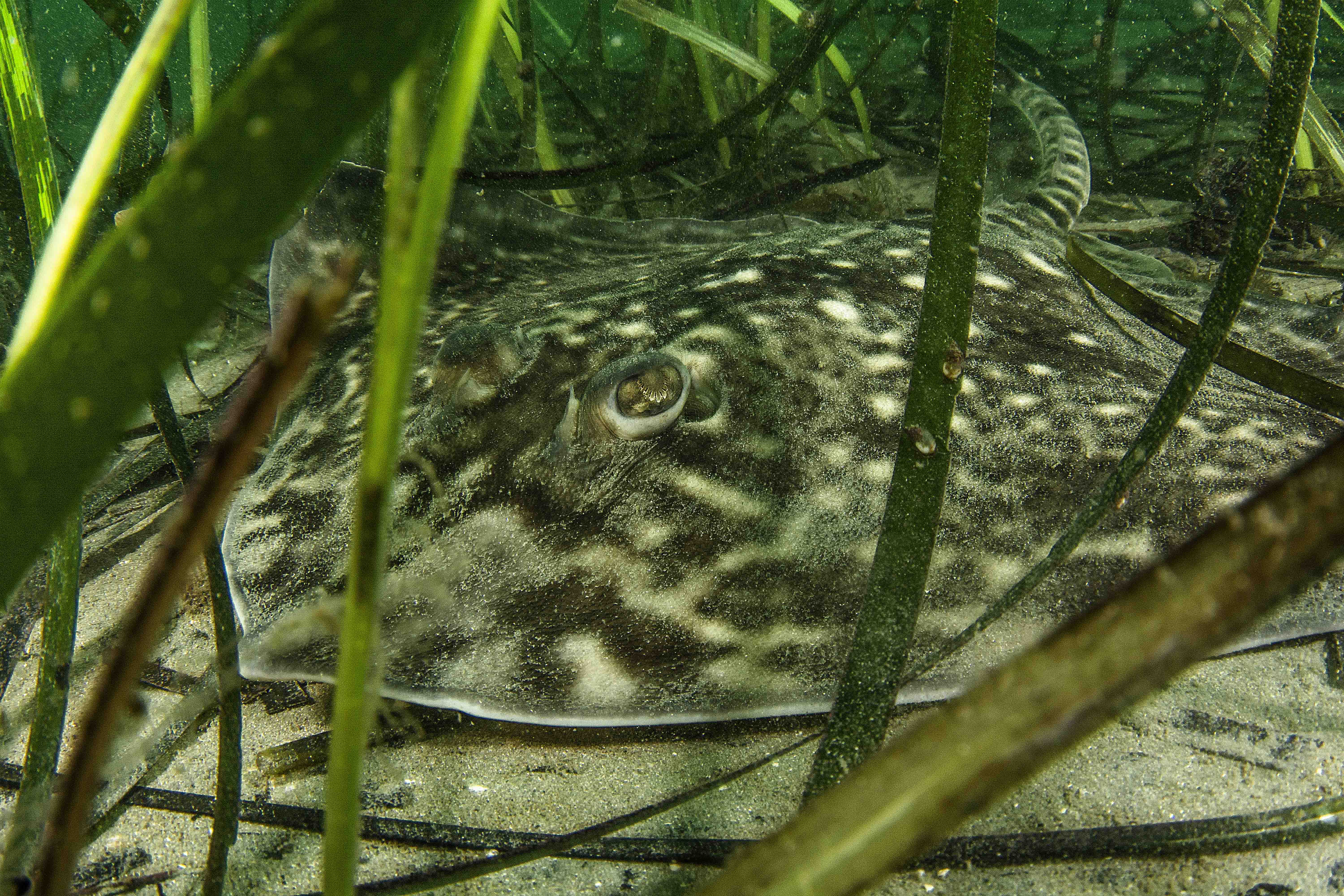
‘The Helford River has very healthy eel grass beds which attract a wide range of marine wildlife. Thornback rays are often found feeding in the centre of the river, after which they come into the protection of the eelgrass to rest.’
‘Cornish Blues’ by Charles Hood taken in Cornwall, England
(Blue shark, Prionace glauca)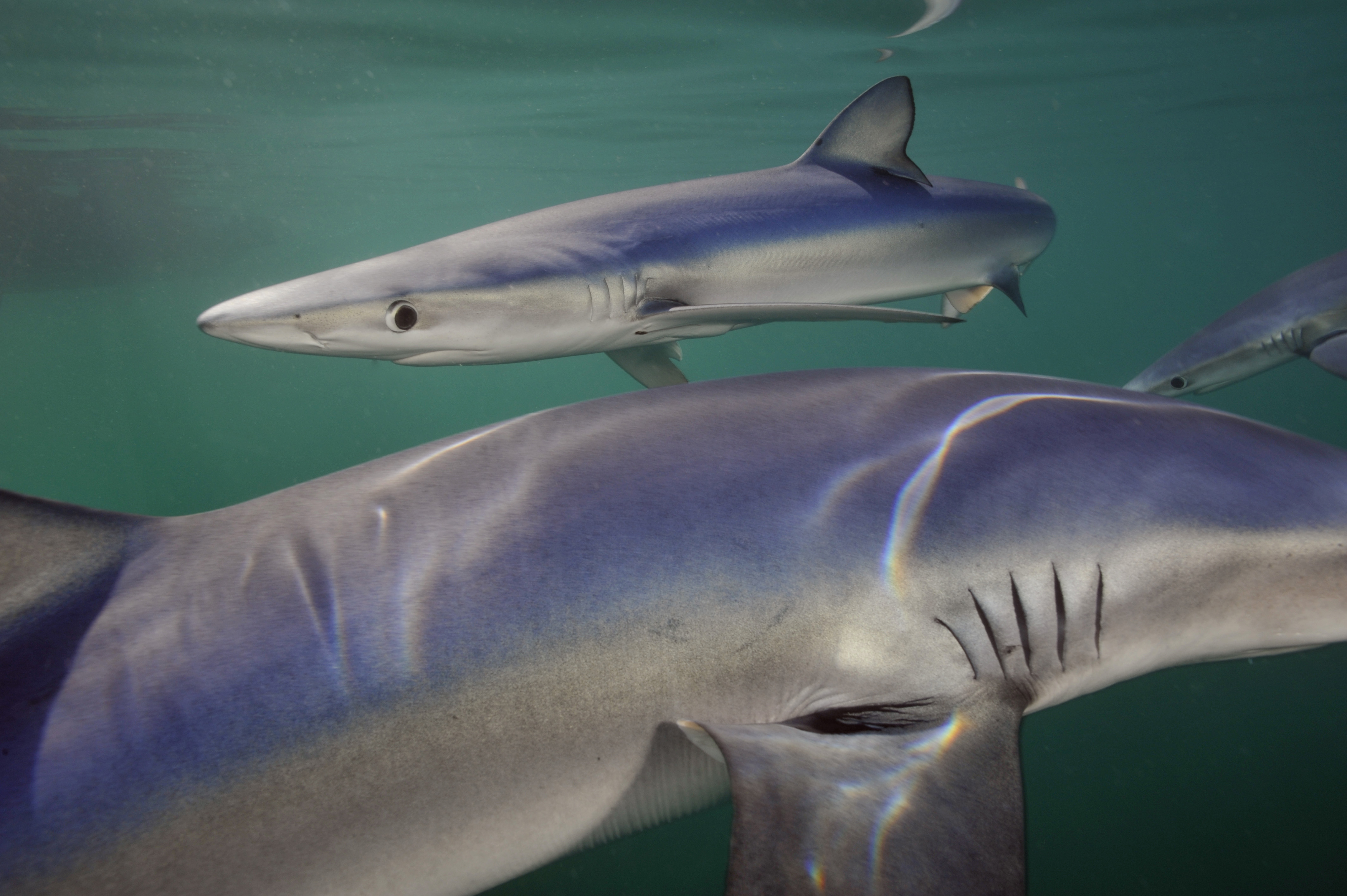
‘Taken about 15 miles south of Penzance in Cornwall. I used chumming to attract the sharks to the boat and then went snorkelling in the shoal. There were about a dozen or so that came very close and I wanted to capture this closeness without them looking threatening or menacing, but rather showing the beauty of Cornwall’s most enigmatic shark.’
‘Urchin Among the Brittle Stars’ by Trevor Rees taken at Loch Carron, Scotland
(Common sea urchin, Echinus esculentus; Common brittle star, Ophiothrix fragilis)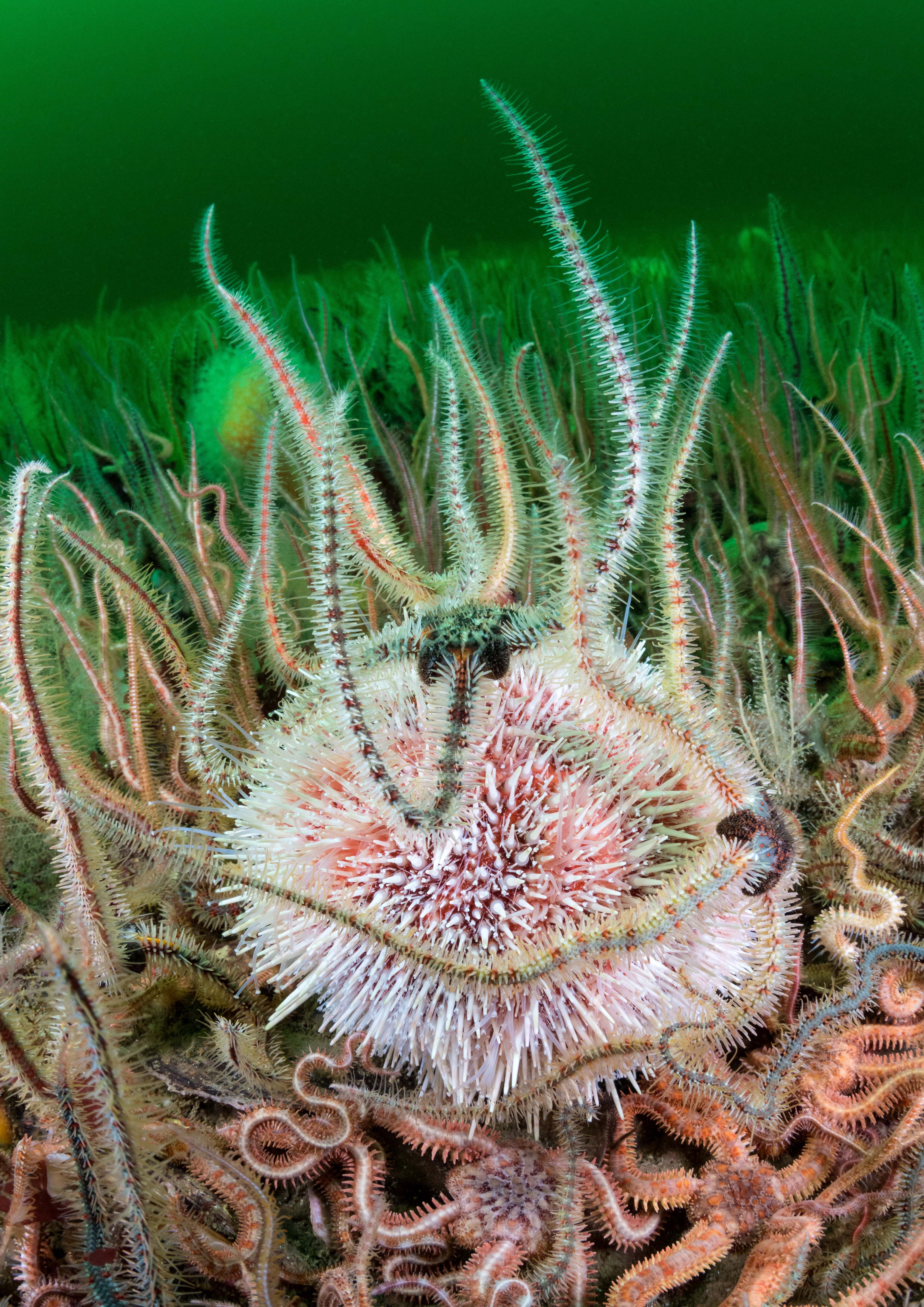
‘Diving on the dense carpet of a brittle star bed has the feel of an alien landscape – beautiful but somewhat eerie at the same time. This common urchin appears at home among the mass of its closely related echinoderms, the brittle stars. In taking this shot I aimed to capture the dark green water background against the more subtle colours of the marine life.’
‘Herring in the Storm’ by Edward Marshall taken on St Mary’s, Isles of Scilly
(Herring gull, Larus argentatus)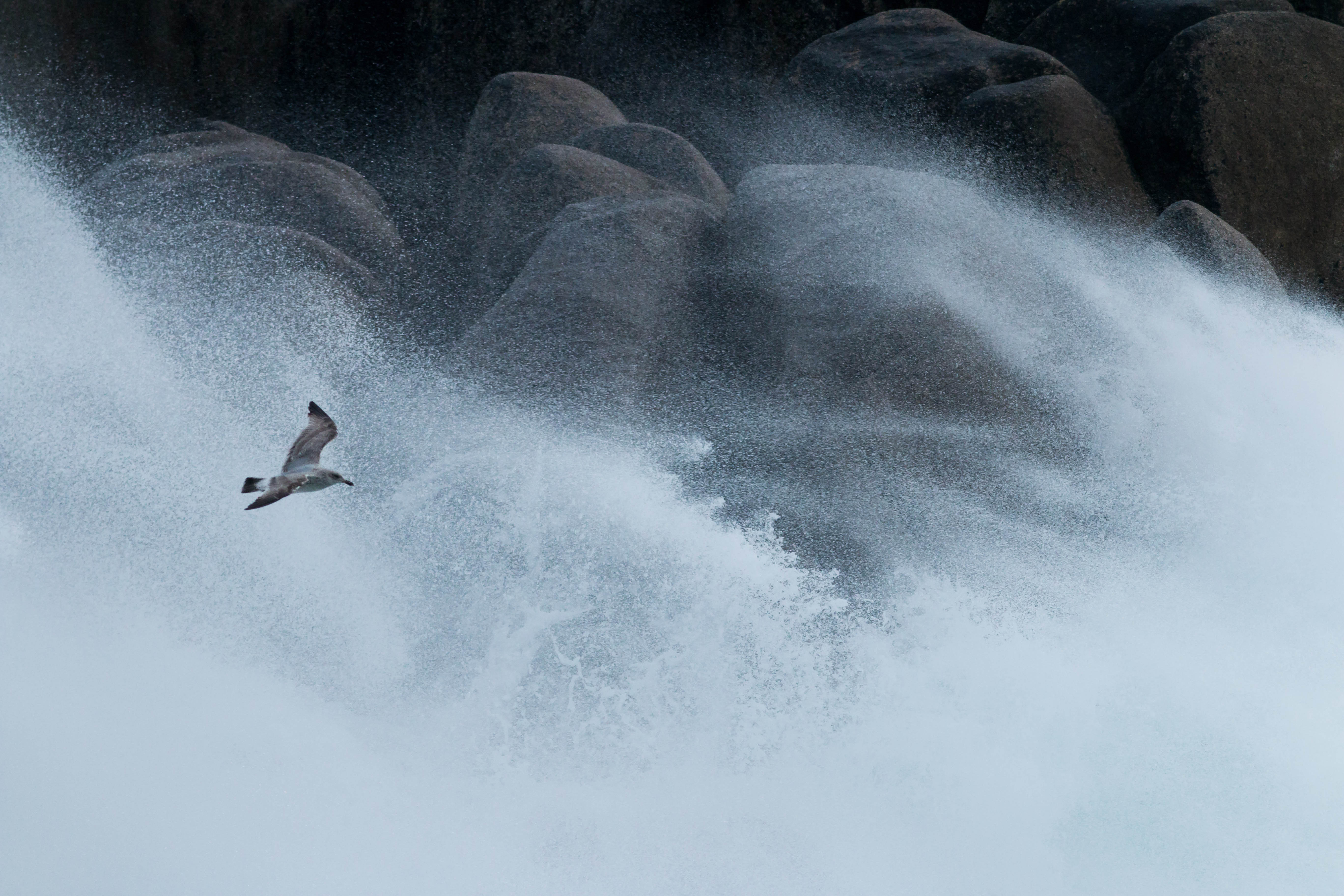
‘As Storm Imogen was building, throwing 40ft waves against the rocky coastline of St Mary’s, I battled to stand upright in the gale-force winds to capture this moment. I had noticed a small flock of herring gulls hanging on the wind, with one in particular passing in front of the dark rocks where the waves were being thrown skyward. This was the image where all the elements came together.’
‘In the Pink’ by George Stoyle taken at St Kilda, Scotland
(Long-spined sea scorpion, Aurulus bubalis; Jewel anemone, Corynactis viridis)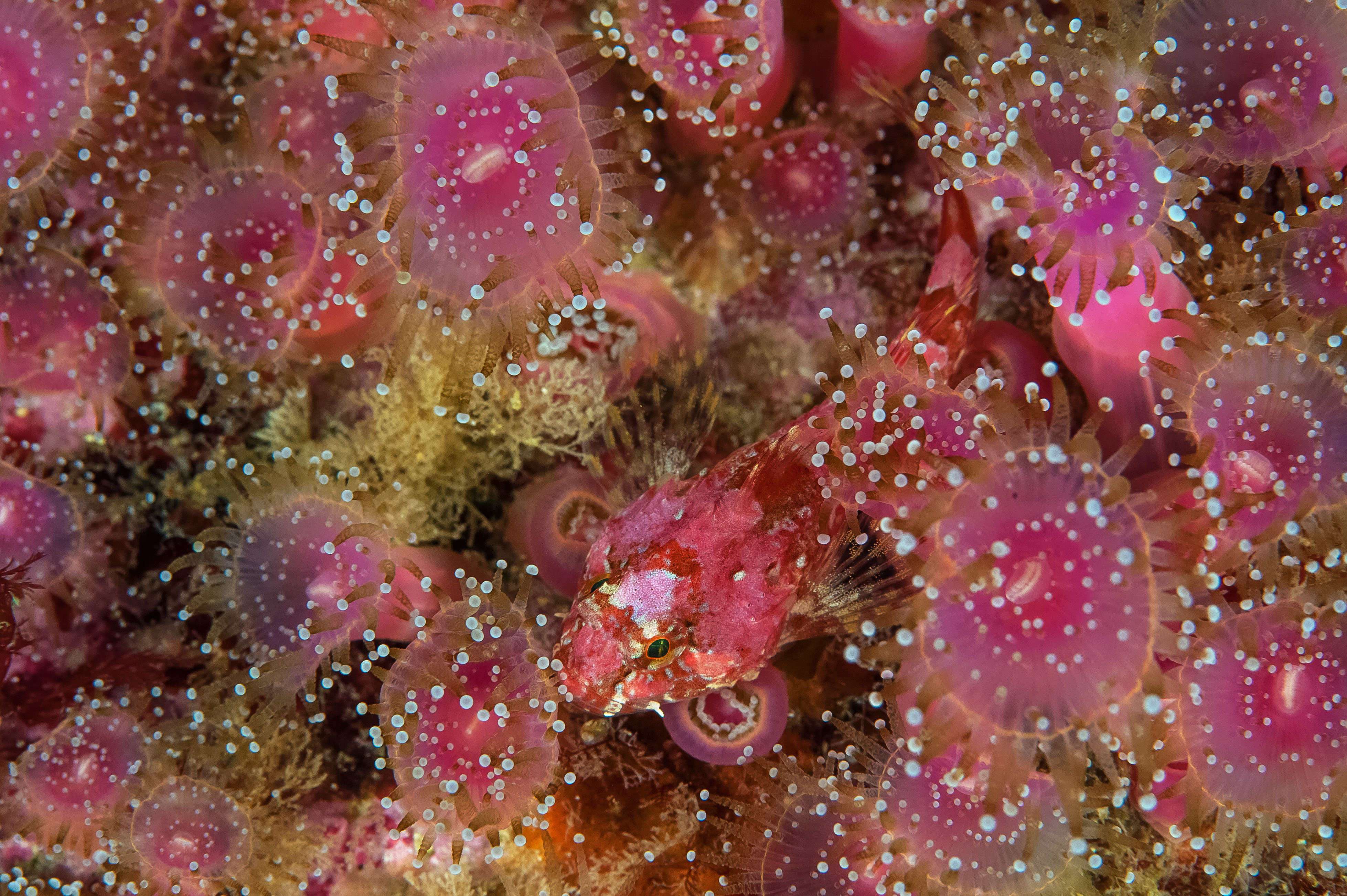
‘I was working for Scottish Natural Heritage on a project to assess the current biological status of major sea caves around some of the UK’s most remote islands. This photo was taken on St Kilda, well known for its crystal-clear oceanic waters and abundance of colourful marine life. Carpets of multi-coloured jewel anemones are a dominant feature on many dives here but they also provide shelter for many other species, like this tiny scorpion fish.’
‘Whisker of Light’ by Josh Jaggard taken on Unst, Shetland Isles, Scotland
(European otter, Lutra lutra)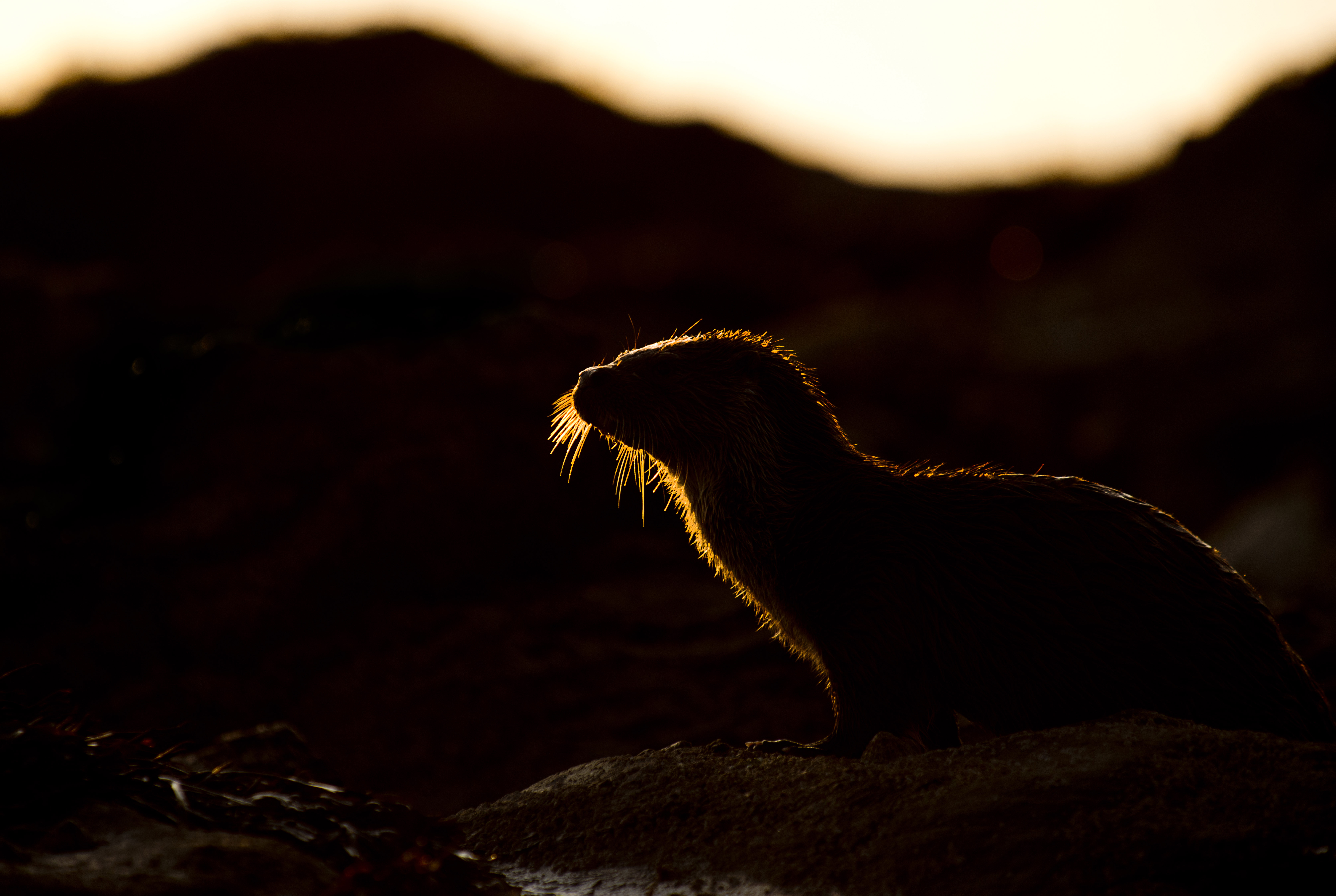
‘This backlit coastal otter shows the elusive side of the animal. People normally just see the outline or shape of an otter before it disappears and I feel this image represents that.’
‘Future’s Fight’ by Dan Bolt take at Babbacombe in Devon, England
(Cuttlefish, Sepia officinalis)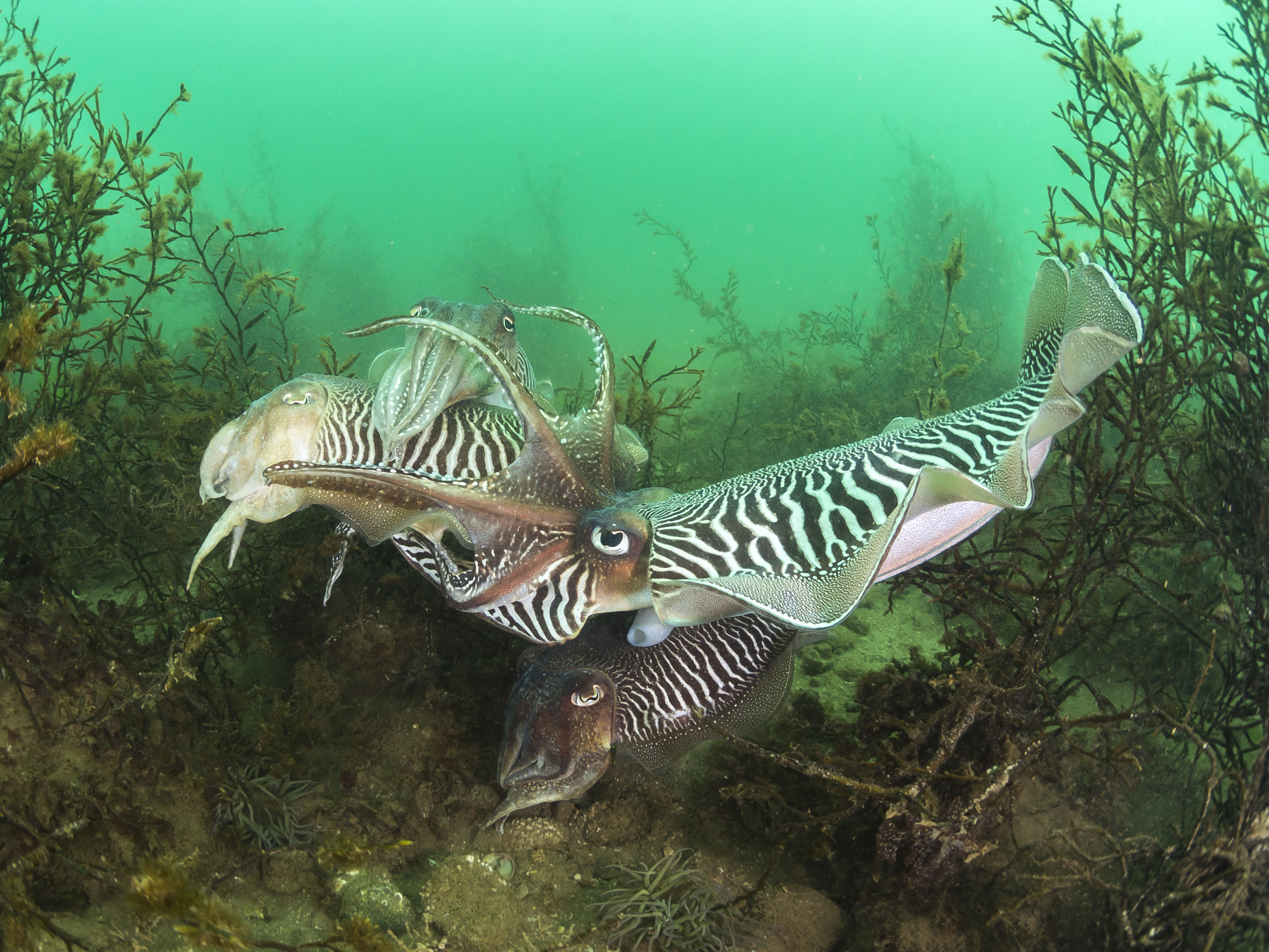
‘Late spring sees the annual gathering of cuttlefish at Babbacombe in south Devon. They come into the warm, sheltered, shallow bay to mate and lay their grape-like eggs. Once paired a male will defend his mate fiercely, so after finding a mated pair I followed them for a good half hour so they could get used to my presence. This patience paid off as they went about their business paying me no heed. When another pair came too close this amazing but brief fight ensued before my eyes and I was quick enough to remember to take a photo of the action! You can clearly see the larger male is dominating the fight, and he certainly saw off the intruders in no time.’
‘Beautiful Blue’ by Will Clark taken in Cornwall, England
(Blue shark, Prionace glauca)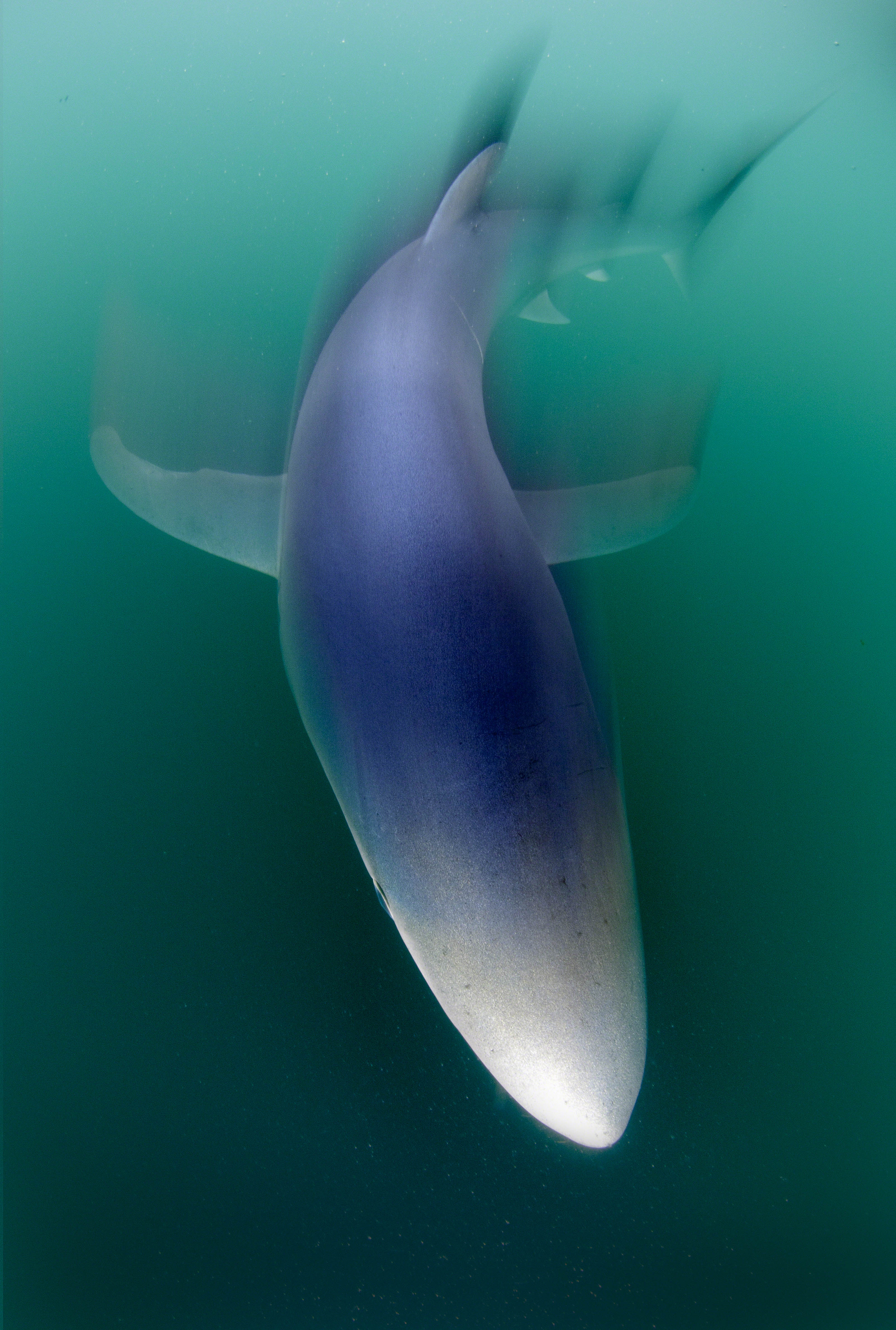
‘Not far off the coast of Cornwall, a blue shark darts past the photographer, resulting in this dynamic view of its beautifully coloured slender body. This migrant fish will have travelled around the Atlantic in a clockwise direction over huge distances, arriving off the southwest tip of England in mid-summer. ’Chumming’ was utilised to attract the shark: a trail of rotting fish particles and oils.’
‘Post-larval’ by George Stoyle taken at North Rona, Scotland
(Monkfish, Lophius piscatorius)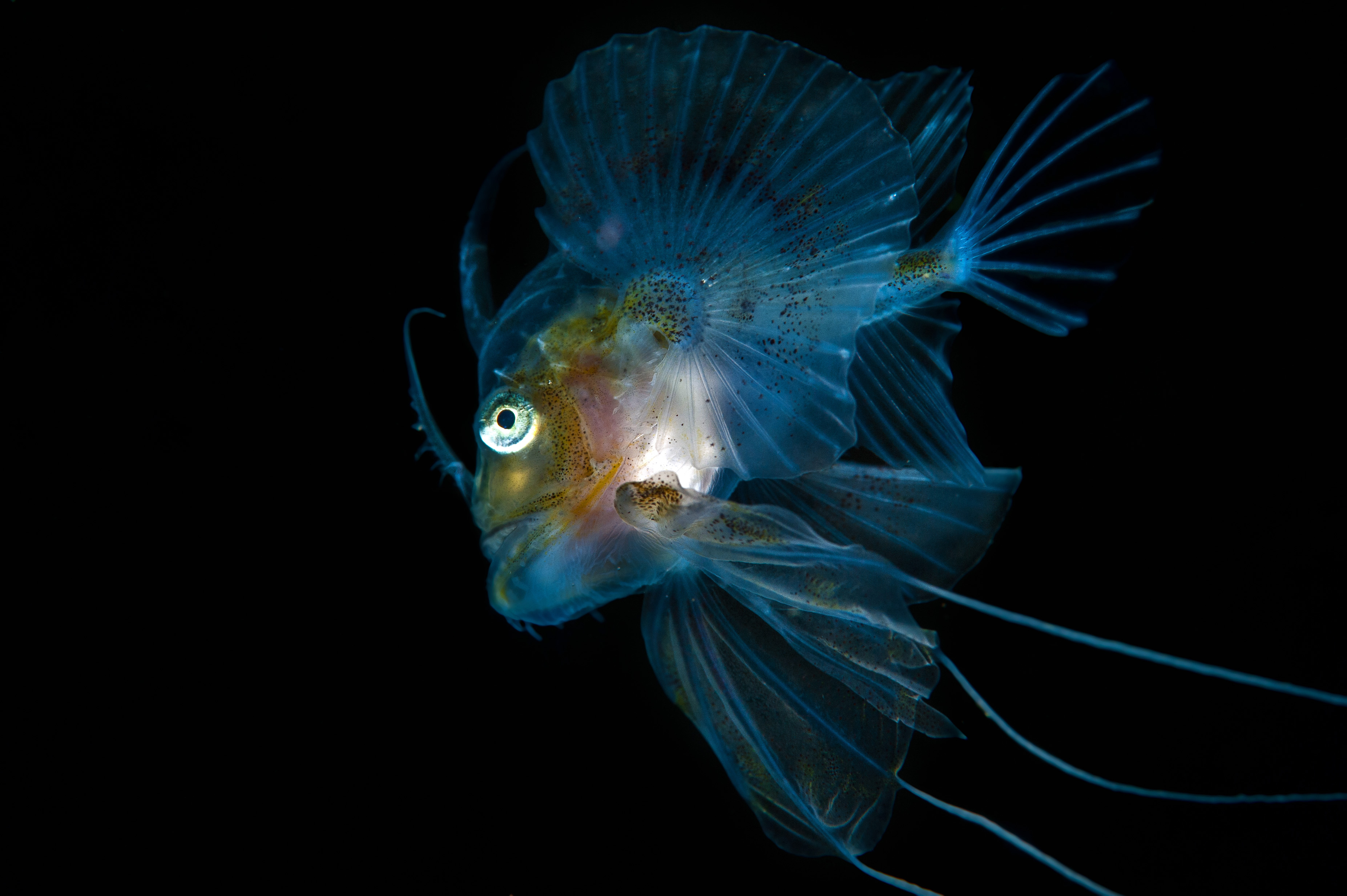
‘I was working for Scottish Natural Heritage on a project to assess the current biological status of major sea caves around some of the UK’s most remote islands. Following a dive inside a cave on North Rona my buddy spotted a tiny post-larval monkfish swimming among the plankton at the cave entrance. Luckily I was shooting macro so spent about 15 minutes just beneath the surface trying to get the fish in focus.’
‘Survival of the Species’ by Adam Hanlon taken on the Farne Islands in Northumberland, England
(Grey seal, Halichoerus grypus)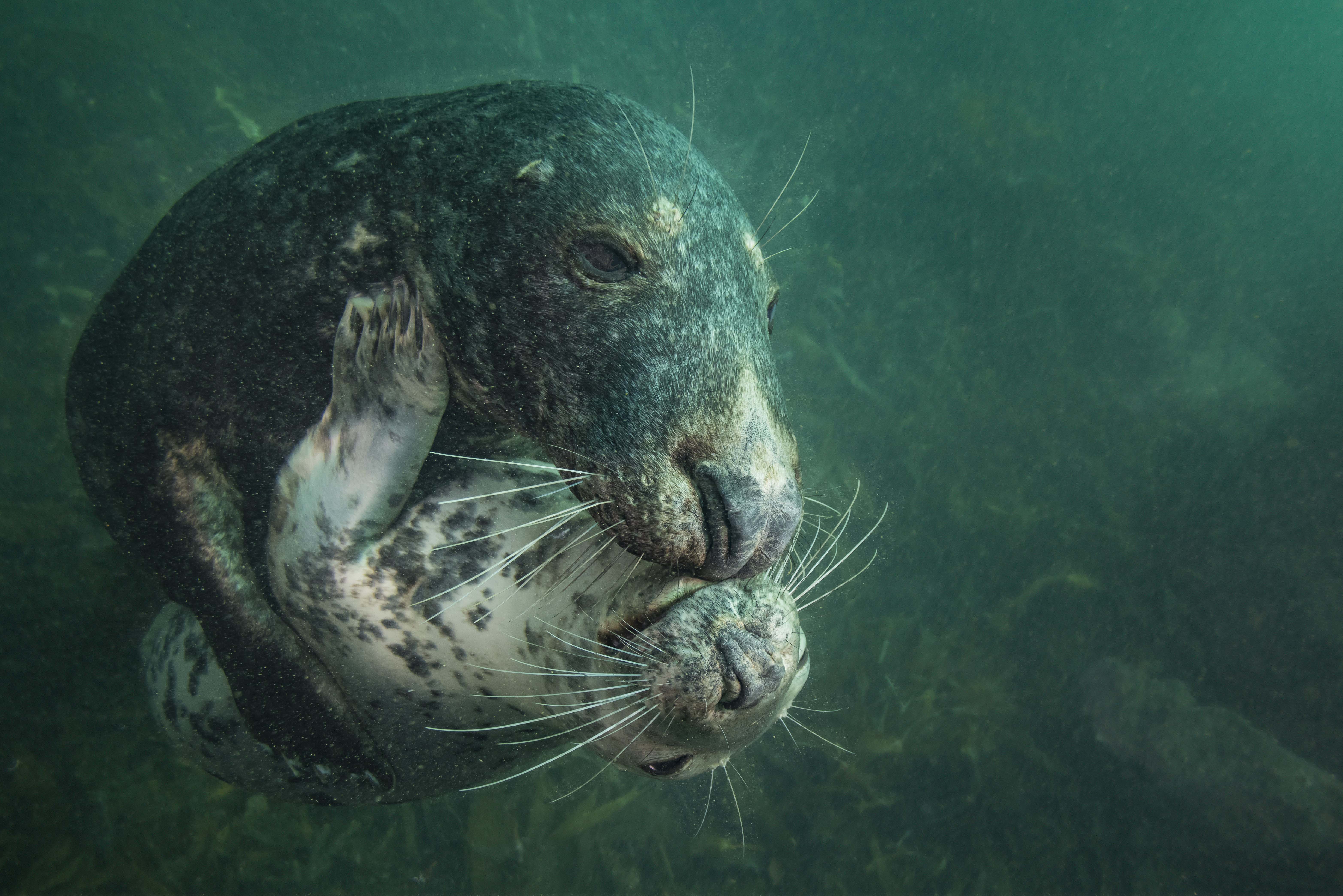
‘As we entered the water, we were singled out by a very amorous female seal. She was continuously biting at us and grabbing us with her flippers. Shortly into the dive, she was joined by a larger (but much more laid back) male. Once they had both got used to my presence, they started mating. The process was remarkably tender and gentle with plenty of holding and, for want of a better word, cuddling.’
To explore the other categories, flick through a copy of the book: British Wildlife Photography Awards Collection 7, AA Publishing. Liked these? Take a look at last year’s winners here. For more features about coastal wildlife and photography, pick up a copy of our magazine.

